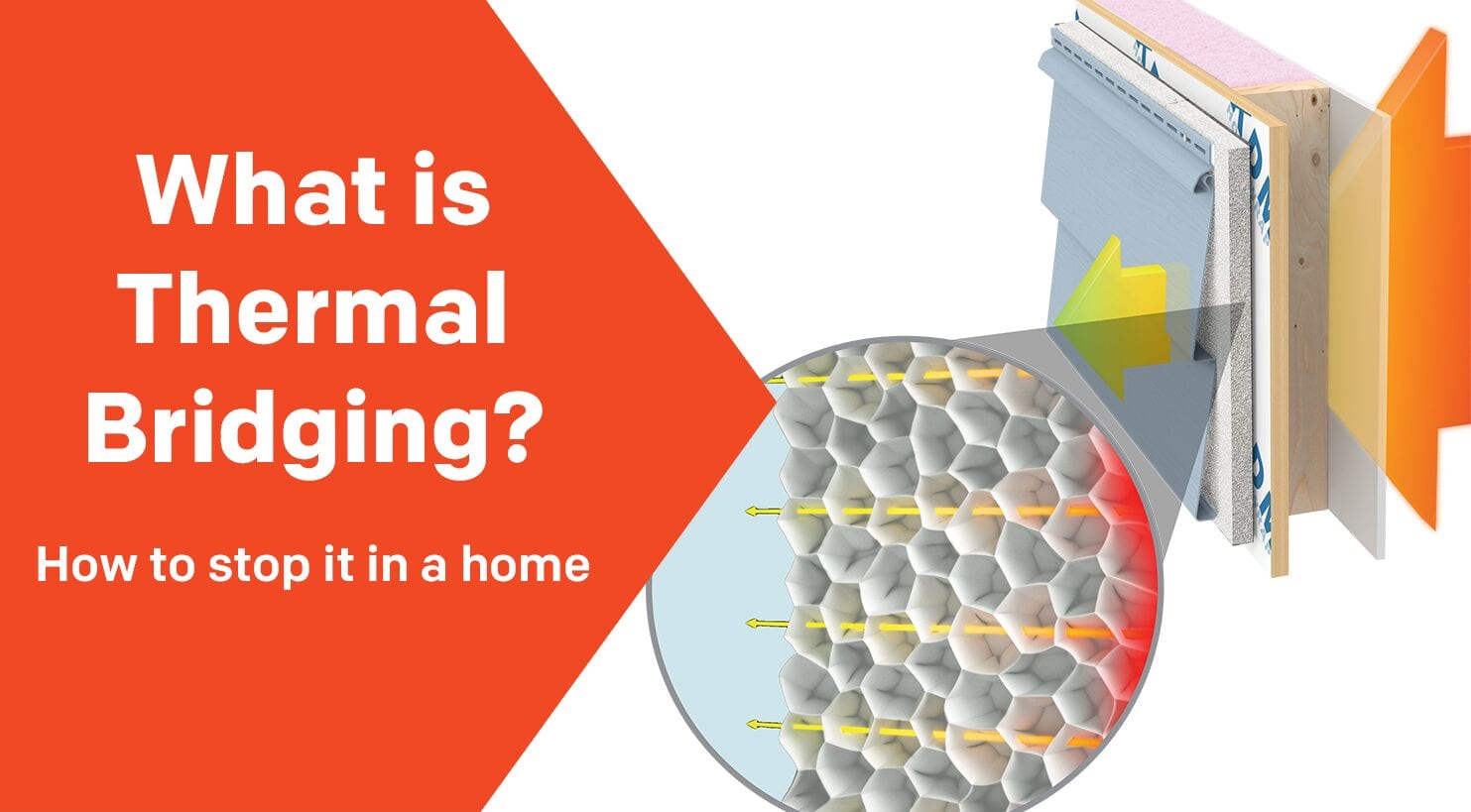
Thermal Bridging and the Impact on the Environment in St. Louis
What is Thermal Bridging?
According to the NCMA, thermal bridging happens when “a relatively small area of a wall, floor or roof loses much more heat than the surrounding area.” A conductive material increases the rate of heat loss when there’s an imbalance of temperature between two areas, such as a heated home and the colder outside air. The most common example of a structure that allows thermal bridging would be your home’s wall studs. The conductive structures are the path of least resistance for heat, which creates a “bridge” for the energy to pass through. This can allow heat to escape from your home during the winter and enter the house during the summer.
Uncovered wall studs, ceiling and floor joists, and improperly insulated structures are the perfect candidates to create a thermal bridging issue. These materials are a significant contribution to heat loss, irregular temperatures, and the increased risk of other climate control issues such as the stack effect. When your home isn’t prepared to reduce heat transfer – the rate at which heat can enter and exit a building – you may notice an increase in discomfort, health concerns, and monthly spending.
The Bigger Problem
Insulation is installed throughout your home to help reduce heat transfer and regulate the temperature throughout the house. However, even if you have the right material installed between joists and floorboards, uncovered structures can still act as a gateway for the heat to easily pass through. Gaps in between insulation can lead to thermal bridging, air leaks, and other issues that impact the comfort of your environment. Unregulated heat transfer can also result in higher utility bills; your HVAC system has to put in extra work in order to replace the air that’s being lost through heat transfer.
Another significant issue thermal bridging brings to your home is the threat of condensation and moisture damage. As warm air interacts with cooler surfaces and condenses, the resulting water droplets can lead to rot, mold, and damaged insulation. Mold growth and bacteria can increase the risk of health hazards and reduce indoor air quality. Moist wood also attracts pests like dust mites, termites, and carpenter ants. With the additional threat of rot, the structural integrity of your home could be put in serious jeopardy.
How Can Insulation Reduce Thermal Bridging?
The insulation throughout your home helps to create a thermal break, which provides a barrier between a structure and heat. In most existing buildings, homeowners can simply work with an insulation team to find the right material to cover these joists and studs to help reduce thermal bridging and heat transfer. However, in some older homes, there may be many areas that can lead to thermal bridging; this is because thermal bridging wasn’t considered a major concern in construction development until recent advancements and research in the industry. One of the most effective solutions experts have been recommending is to add a continuous layer of insulation throughout a structure. With regular inspection and maintenance, homeowners can reduce the threat posed by deteriorated or damaged material.
For new construction projects, contractors also have the option of building with SIPs (structural insulated panels) or framing with advanced techniques that reduce the use of wall studs without harming the structural integrity of your building. When working on the development of your new home or business building, it’s crucial to consult industry experts that not only have experience in energy-efficient practices but can also provide advice on reducing energy usage through preventative measures. One of the best ways you can get ahead of additional costs is by staying involved in the early processes, implementing practices and methods that will support your building envelope for years.
Find More Answers to Insulation FAQs
Having a better understanding of your home’s insulation can help you make informed decisions on your next home improvement project. Thermal bridging may seem like a technical problem for construction professionals and other industry experts to be concerned with, but homeowners should also take an interest in these phenomena. Doing so could reduce costly mistakes and energy waste! When looking to make cost-effective and energy-efficient renovations, your comfort and safety shouldn’t be an afterthought.
At Koala Insulation of Gateway West, our experts are well-versed in home improvements and insulation. Our experts will arrive with state-of-the-art equipment to thoroughly inspect your attic or home and identify any areas in need of repair or improvement. By hiring a Koala Insulation expert, you not only get to enjoy a more efficient home faster, but you also get to benefit from the years of energy savings that professionally installed insulation will bring.
Ready to book your free insulation evaluation?
We have 3 convienant ways for you to get in touch
We Provide Insulation Services to the Following Gateway West & Metro East IL Areas
CHESTERFIELD, BALLWIN, WILDWOOD, VALLEY PARK, SAINT LOUIS, SAINT CHARLES, O FALLON, LAKE SAINT LOUIS, WENTZVILLE, HAZELWOOD, BRIDGETON, EARTH CITY, PORTAGE DES SIOUX, SAINT PETERS, FENTON, EDWARDSVILLE, GLEN CARBON, GRANITE CITY, HARTFORD, MADISON, MARYVILLE, ROXANA, SOUTH ROXANA, VENICE, WOOD RIVER, FAIRVIEW HEIGHTS, CASEYVILLE, COLLINSVILLE
Counties Served
SAINT LOUIS, SAINT CHARLES, JEFFERSON, MADISON, SAINT CLAIR
Zip Code
63026, 63005, 63011, 63017, 63021, 63038, 63040, 63088, 63131, 63141, 63304, 63366, 63367, 63368, 63385, 63042, 63044, 63045, 63301, 63303, 63373, 63376, 63026, 63117, 63119, 63122, 63124, 63126, 63127, 63128, 63143, 63144, 62025, 62026, 62034, 62040, 62048, 62060, 62062, 62084, 62087, 62090, 62095, 62208, 62232, 62234, 62269
